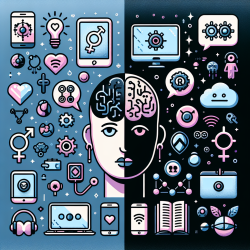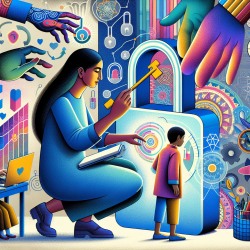Introduction
In today's digital age, social media has become a pivotal part of youths' lives. However, its impact on mental health, especially among transgender and gender nonbinary (TGNB) youths, remains a topic of debate. A recent study titled Analysis of Social Media Use, Mental Health, and Gender Identity Among US Youths sheds light on this complex relationship. This blog aims to help practitioners enhance their skills by implementing the study's outcomes or encouraging further research.
Understanding the Research
The study analyzed data from 1231 youths aged 10 to 17, focusing on the interplay between gender identity, social media use, and mental health. The findings suggest that gender identity significantly moderates the association between social media practices and mental health outcomes.
Key Findings
- Active Social Media Use: Active engagement on social media was associated with lower emotional problems for TGNB youths compared to cisgender youths.
- Intentional Breaks: Taking breaks from social media was linked to increased depression in TGNB youths, highlighting the importance of online support systems.
- Cleaning and Curating Feeds: TGNB youths who regularly curated their social media feeds experienced lower depression levels, while this activity had the opposite effect on cisgender youths.
- School Media Literacy: Schools with strong media literacy programs positively impacted all youths, particularly TGNB youths, by promoting protective social media practices.
Implications for Practitioners
Practitioners can leverage these findings to tailor their approaches when working with TGNB youths. Here are some strategies:
- Encourage Active Use: Promote active engagement on social media platforms to help TGNB youths create supportive online communities.
- Support Curating Practices: Guide TGNB youths in curating their social media feeds to ensure a positive and safe online environment.
- Advocate for Media Literacy: Work with schools to implement or strengthen media literacy programs that teach youths how to navigate social media healthily.
- Understand the Risks of Breaks: Recognize that for some TGNB youths, social media is a critical support system, and breaks might not always be beneficial.
Encouraging Further Research
The study highlights the need for more research on the nuanced effects of social media on different gender identities. Practitioners should consider participating in or supporting further studies to deepen our understanding of these dynamics.
Conclusion
Social media's impact on mental health is complex and varies significantly based on gender identity. For TGNB youths, social media can serve as a protective space, but it requires careful navigation. By implementing the study's findings, practitioners can better support TGNB youths in leveraging social media for positive mental health outcomes.
To read the original research paper, please follow this link: Analysis of Social Media Use, Mental Health, and Gender Identity Among US Youths.










